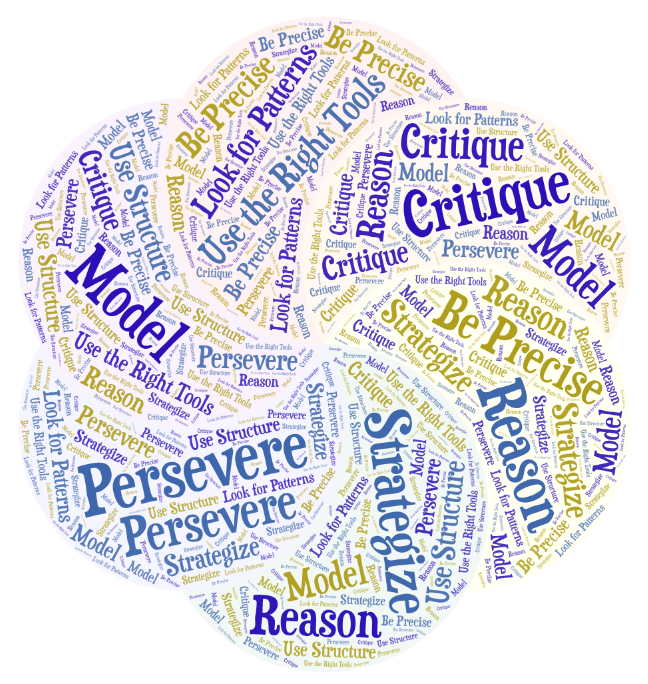SMPs
SMP Posters
SMP Posters 2
- Make sense of problems and persevere in solving them
- What it means: Understand the problem, find a way to attack it, and work until it is done. Push yourself to solve tough problems by applying what you already know and monitor yourself when problem-solving. Help others by not giving away answers, but encouraging them to struggle through the work too. Do not ask for help before doing research and trying it yourself.
- Reason abstractly and quantitatively
- What it means: Contextualize and decontextualize. Break problems apart and show the parts symbolically, with pictures, or in any way other than the standard algorithm (steps & formulas). If you are working through a real-world problem, you must apply the “math work” to the situation. Draw your thinking.
- Construct viable arguments and critique the reasoning of others
- What it means: Talk about math, and useg mathematical language, to support or oppose the work of others. Use mathematical vocabulary and engage in discourse with classmates. Discuss ideas freely, but with purpose. Critique constructively, being helpful and direct. Challenge others to think, and keep an open mind when they challenge you.
- Model with mathematics
- What it means: Use math to solve real-world problems, organize data, and understand the world around you. Think about how math relates to science, art, music, and reading. Look at real graphics, articles, and data to see how math is relevant and real.
- Use appropriate tools strategically
- What it means: Select the appropriate math tool to use and use it correctly. Analyze your options, and select the best too for the job. Create tools to use for problem-solving and to monitor learning (binder, notes, etc.). Use tools you have created, and modify them when necessary. Discover and experiment with tools; do not ask for guidance before doing your own research.
- Attend to precision
- What it means: Speak and solve mathematics with exactness and meticulousness. Use precise and exact language in math. Measurements should be exact, numbers should be precise, and explanations must be detailed. Explain and ask questions with specific information and results in mind.
- Look for and make use of structure
- What it means: Find patterns and repeated reasoning that can help solve more complex problems. Recognize facts, rules, and properties in mathematics. Look for familiar relationships within math problems and formulas. Identify multiple strategies for problem-solving and then select the best one to use. Repeatedly break apart numbers and problems into different parts. Use what you know is true to solve a new problem. Math is a language and has its own grammar!
- Look for and express regularity in repeated reasoning
- What it means: Keep an eye on the big picture while working out the details of the problem. Read and reread the instructions, and look at options for answers before even starting to attack the problem. Generalize your thinking, and apply what you know already to solve multiple problems in various situations.

